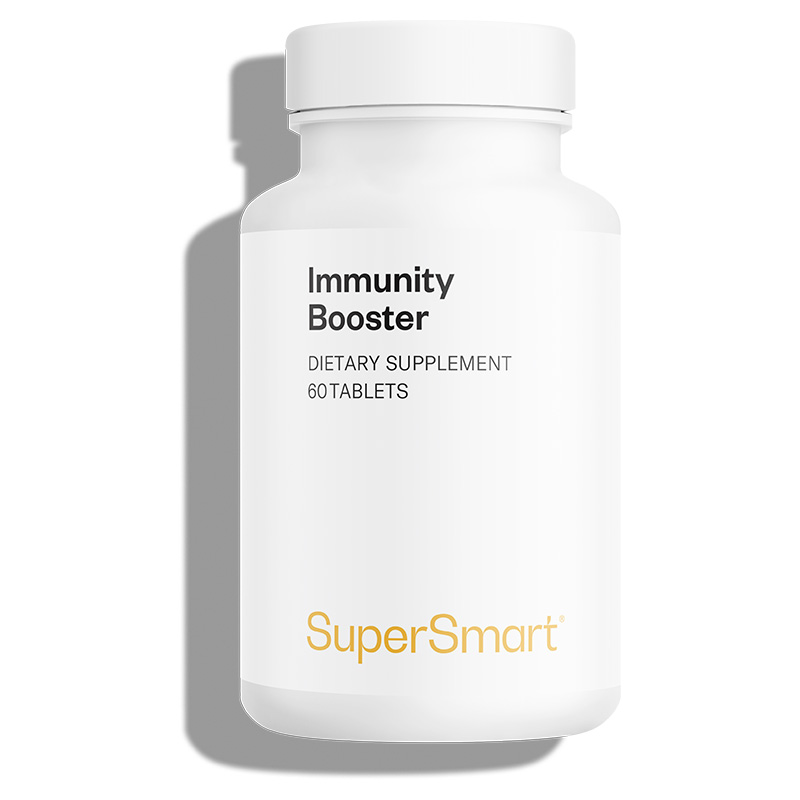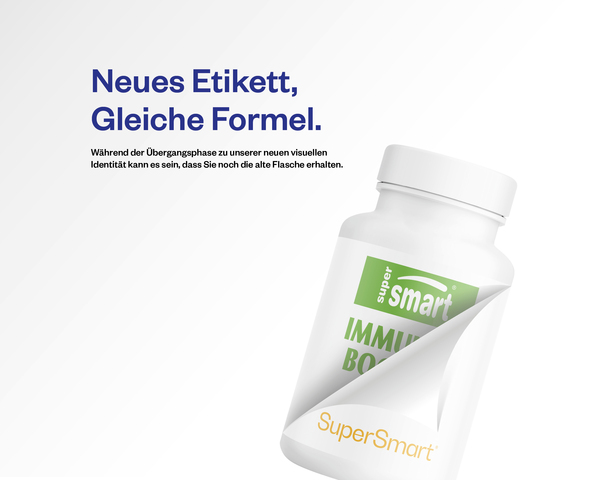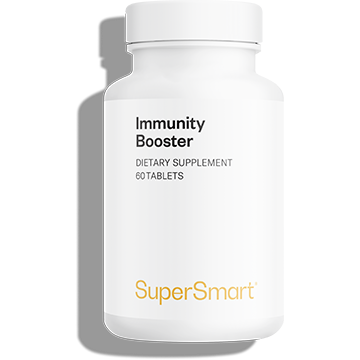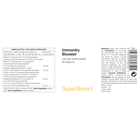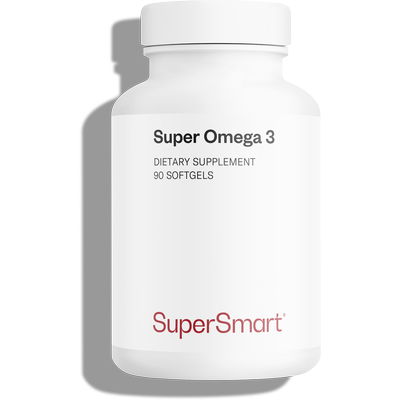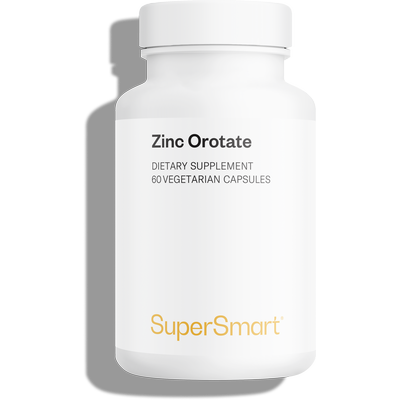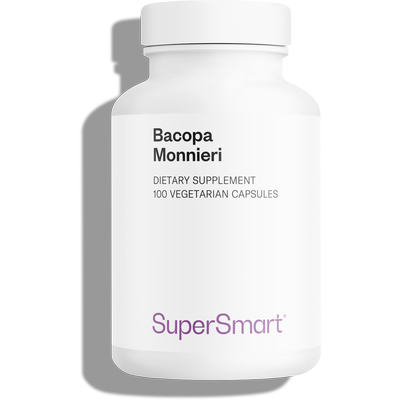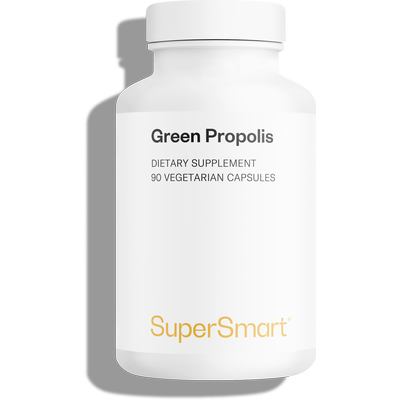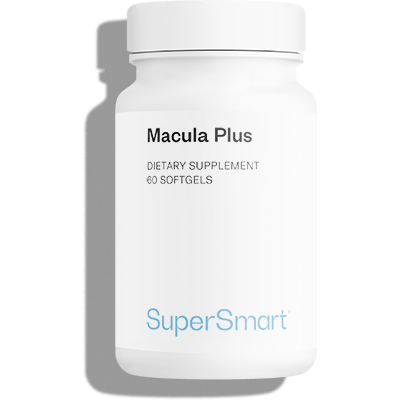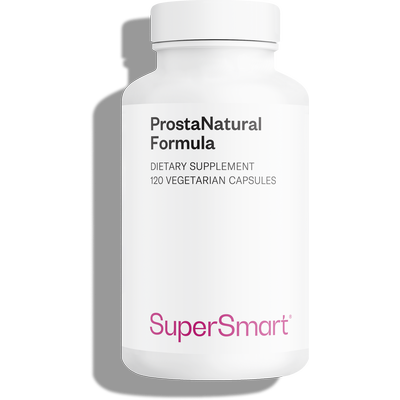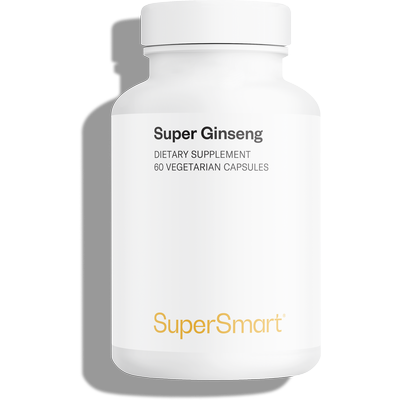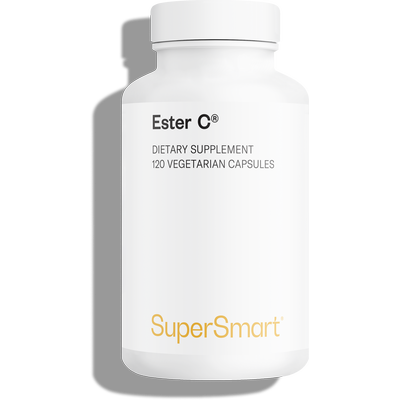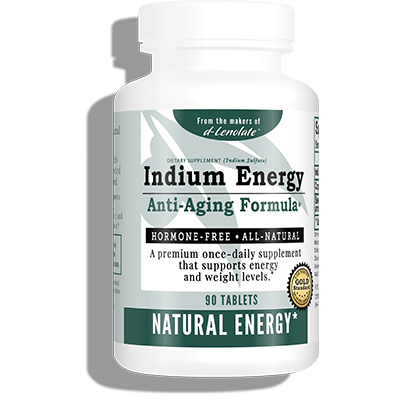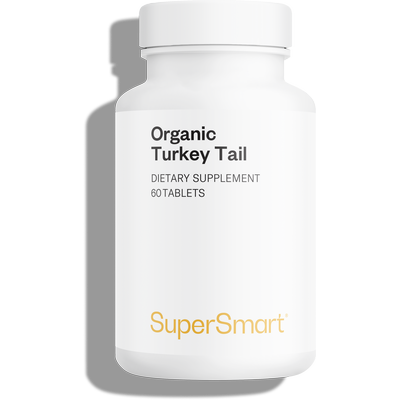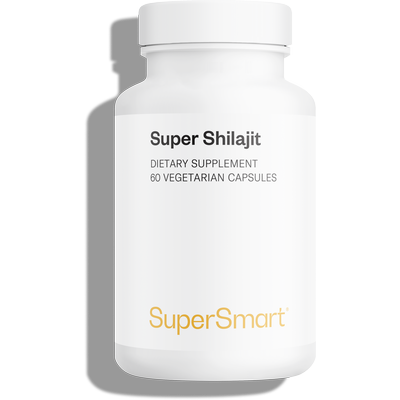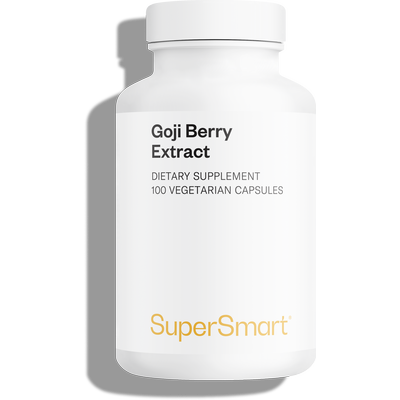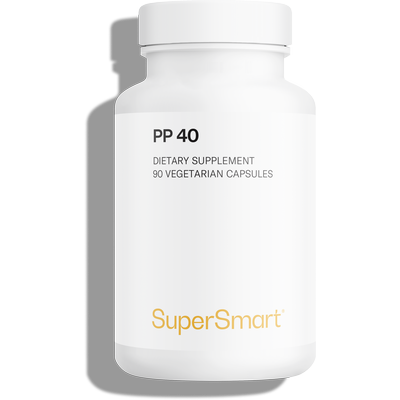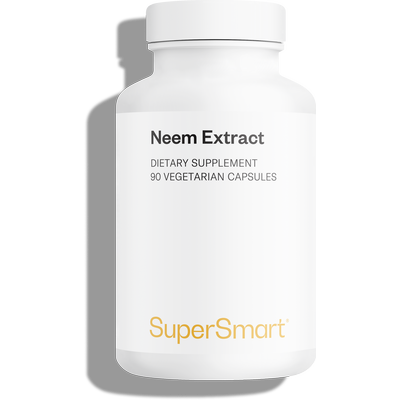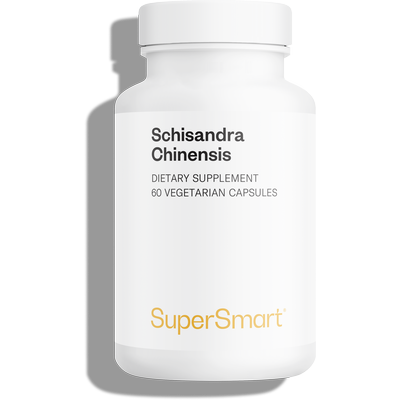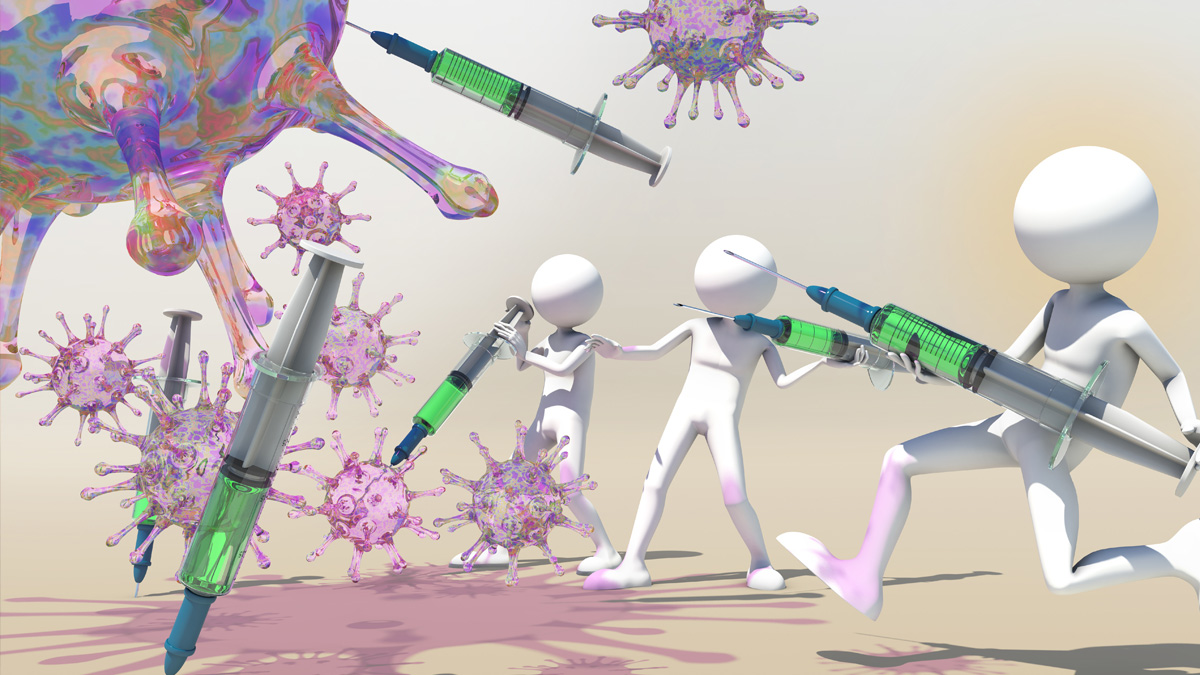Auf Lager
Immunity Booster
Nahrungsergänzungsmittel mit Echinacea: Immunität, Atemwege
Ergänzen Sie Ihre Auswahl
Immunity Booster ist einNahrungsergänzungsmittel von vorbildlicher Qualität, das zur Stärkung des Immunsystems beitragen soll. Es wurde lange und sorgfältig vom SuperSmart-Team entwickelt.
Diese einzigartige Formel kombiniert Extrakt aus biologischer Echinacea (eine Heilpflanze, die bekanntlich zum Funktionieren des natürlichen Abwehrsystems beiträgt, zur Beruhigung von Hals und Rachen bei Reizungen usw.), Beta-Glucane von Saccharomyces cerevisiae (Polysaccharide), die dafür bekannt sind, die Immunität zu verbessern), Vitamin C und Zink (beide an der ordnungsgemäßen Funktion desImmunsystems beteiligt)) (1-4).
Alle diese Verbindungen wurden ausgewählt, um synergetisch zu wirken und Ihnen bestmöglichen Nutzen zu bieten.
Woraus besteht Immunity Booster ?
Die Ergänzung enthält also 4 bioaktive Inhaltsstoffe mit besonders interessanten Vorzügen :
- Bio-Echinacea-Extrakt (vom Typ Echinacea purpurea) aus ökologischem Landbau. Echinacea ist eine Pflanzenart der Familie der Asteraceae, mit spindelförmiger Wurzel und rosafarbenen Blüten. Diese in den Great Plains von Nordamerika beheimatete berühmte Heilpflanzewurde von Indianern zurBekämpfung von Erkältungen, Bronchitis, Grippe und Infektionen der Atemwege verwendet. Echinacea wurde dann 1895 in Europa eingeführt. Insbesondere die Art Echinacea purpurea ist bei Kräuterkennern äußerst beliebt. Heute ist es eine der am häufigsten verwendeten Heilpflanzen in Europa und Nordamerika. Diese purpurköpfige Echinacea trägt insbesondere zur Funktion des körpereigenen Abwehrsystemsbei und weist eine beruhigende Wirkung auf Mund, Hals und Rachen auf (5-6) ;
- Beta-Glucane aus Saccharomyces cerevisiae (standardisiert auf 70% Beta (1,3 / 1,6)-Glucane). Die Saccharomyces cerevisiae, oder Backhefe, ist eine Hefe, die seit Jahrtausenden von Ägyptern, Babyloniern oder sogar Kelten verwendet wird, um Brot, fermentierte Getränke, Kefir zu machen, usw. Diese Hefe ist bekannt für ihren Reichtum an Beta-Glucanen, diesen berühmten immunstimulierenden Polysacchariden, die als lösliche Ballaststoffe vorliegen (7) ;
- Vitamin C aus Bio-Acerola-Extrakt. Acerola ist ein tropischer Baum mit glänzenden Blättern und säuerlichen roten Früchten, den so genannten Barbados-Kirschen oder westindischen Kirschen. Dieser Baum ist eine großartige natürliche Quelle für Vitamin C. Wie allgemein bekannt, ist Vitamin C ein essentieller Nährstoff, der insbesondere zur Verbesserung des Immunsystems beiträgt (8) ;
- Zink. Als essentielles Spurenelement ist Zink, wie Vitamin C, an der Stärkung des Immunsystems beteiligt. In Immunity Booster gibt es diesen Schlüsselnährstoff in zwei sich ergänzenden Formen. Zinkgluconat ist in erster Linie ein organisches Zinkpräparat, das ein Zinksalz der Gluconsäure enthält und sich durch seine lange Haltbarkeit auszeichnet. Zinksulfat ist dagegen ein anorganisches Zinkpräparat, das das Zinksalz der Schwefelsäure enthält. Es wird normalerweise verwendet, um Zinkmangel zu verhindern (der den Zustand der Immunität, der Haut und der Haare beeinträchtigen kann.) (9)
Die Vorteile der Komponenten von Immunity Booster
Hier sind die verschiedenen Vorteile, die die Verbindungen von Immunity Booster bieten :
- Als grosser Klassiker der Phytotherapie ist die Echinacea vom Typ Echinacea purpurea reich an Alkylamiden, phenolischen Verbindungen, komplexen Polysacchariden, Alkaloiden, usw. Diesem biologischen Reichtum verdankt sie ihre traditionelle Verwendung zum Funktionieren des natürlichen Abwehrsystems. Es ist bekannt, dass diese Pflanze zur Stärkung der angeborenen und adaptiven Immunität beiträgt. Mehrere Studien haben gezeigt, dass sie sowohl entzündungshemmende als auch antimikrobielle und antivirale Wirkungen hat. Echinacea soll durch die Förderung der Aktivität von Makrophagen und NK-Zellen wirken. In einer klinischen Doppelblindstudie zum Beispiel, an der 473 Patienten teilnahmen, die mit Grippe infiziert waren, erwies sich ein heißes Getränk auf Echinacea-Basis als genauso wirksam wie ein Antivirus, und zwar mit weniger Nebenwirkungen. Was die Atemwege betrifft, soll Echinacea purpurea auch dazu beitragen, den Mund zu beruhigen, den Hals und den Rachen bei Reizungen zu entlasten und eine angenehme Wirkung auf den Hals und die Stimmbänder zu erzielen. Sie soll auch helfen, die Gesundheit der unteren Harnwege aufrechtzuerhalten (10-13) ;
- Der Extrakt von Saccharomyces cerevisiae ist seinerseits auf 70% Beta (1,3 / 1,6) -Glucan standardisiert, um eine wesentliche Aufnahme von Polysacchariden sicherzustellen. Beachten Sie, dass diese Antioxidantien, bekanntermaßen auch das Immunsystem stärken. Beta-Glucane scheinen eine immunmodulatorische Wirkung auf verschiedene Zelltypen auszuüben: zytotoxische T-Lymphozyten, B-Lymphozyten, Neutrophile, usw. Sie sollen dazu beitragen, eine bessere Reaktion der Makrophagen und die Ausscheidung von Zytokinen zu aktivieren (Interleukine IL-1, IL-6 und IL-8). Sie würden somit helfen, Krankheiten und Infektionen der oberen Atemwege zu verhindern. Darüber hinaus würden sie sich auch im Zusammenhang mit Allergien und unkontrollierter Zellproliferation als vorteilhaft erweisen (14-22) ;
- Vitamin C von Acerola trägt zur Funktion des Immunsystems, des Nervensystems und zum Schutz der Zellen vor oxidativem Stress bei. Diesesstarke Antioxidans ist insbesondere an der Unterstützung der antiviralen Immunantwort und der Erhöhung der Anzahl zytotoxischer T-Lymphozyten im Körper beteiligt. Vitamin C ist auch an einem einwandfreien Energiestoffwechsel, an einer ordnungsgemäßen psychischen Funktion und an der reibungslosen Kollagenbildung beteiligt, die für eine normale Funktion von Knochen, Knorpel, Blutgefäßen, Haut, Zahnfleisch und Zähne unentbehrlich ist (23-26) ;
- Zink trägt schließlich zur normalen Funktion des Immunsystems und des Sehvermögens und zur Erhaltung der gesunden Haut, Nägel und gesunder Haare bei. Es ist auch am normalen Stoffwechsel von Vitamin A, Kohlenhydraten und Fettsäuren, an der einwandfreien Proteinsynthese und am Schutz der Zellen vor oxidativem Stress beteiligt. Dieses Mineral ist auch am Prozess der Zellteilung beteiligt und hilft bei der Bekämpfung mehrerer chronischer Krankheiten im Zusammenhang mit dem Altern (27-29).
Wie wird dieses Nahrungsergänzungsmittel eingenommen?
Nehmen Sie 1 Tablette von Immunity Booster pro Tag mit einem Glas Wasser ein.
Gegenanzeigen zur Einnahme von Immunity Booster
Aufgrund ihres Gehalts an Echinacea wird diese Ergänzung nicht für Menschen empfohlen, die an Autoimmunerkrankungen oder fortschreitenden Krankheiten leiden, aber auch für Menschen, die Steroide oder Immunsuppressiva einnehmen
Zusammensetzung Immunity Booster
Sie haben Fragen? Oder Bedenken?
Möchten Sie Ihre Abwehrkräfte verbessern? Hier sind 4 ultimative Tipps, die Ihnen dabei helfen:
- Reduzieren Sie Ihr Stressniveau. Übermäßige Ausscheidungen von Cortisol, auch als Stresshormon bekannt, können die Funktion des Immunsystems beeinträchtigen. Achten Sie also darauf, den Druck von Zeit zu Zeit abzubauen und sich zu entspannen;
- Regelmäßiges Training.Es ist wohl bekannt, dass wiederholte körperliche Aktivität (ohne Übermaß) die Immunität stimuliert. Planen Sie zum Beispiel 2,5 Stunden Joggen pro Woche ein, aufgeteilt in 3 Einheiten;
- Schlafen Sie genug. Einige Studien haben gezeigt, dass Müdigkeit die Qualität der Immunantwort beeinträchtigen kann;
- Verbrauchen Sie fermentierte Lebensmittel (Joghurt, Gurken, Sauerteigbrot, Miso, Milch oder Buttermilch, usw). Diese Lebensmittel sind gut für die Darmflora, einen wichtigen Bestandteil der Immunität.
Um die immunstimulierende Wirkung der Komponenten von Immunity Booster zu maximieren, wie wäre es mit anderen hochwertigen Nahrungsergänzungsmitteln?
Parallel zu dieser Kur können Sie auch eine Kur von Green Propolis, einer ausgezeichneten Ergänzung von grünem Propolis, starten. Denken Sie daran, dass dieser natürliche Stoff, die von Bienen zum Schutz ihres Bienenstocks produziert wird, über 300 bemerkenswerte Nährstoffe enthält. Er wird Ihnen helfen, Ihr Immunsystem wirksam zu verbessern.
Darüber empfehlen wir Ihnen, die Vorteile von Probiotika und insbesondere von Bacillus subtilis zu nutzen. Wir haben diesen aktiven Stamm (I-2745) in DR Caps ™ abgefüllt, um das Überleben dieser "guten Bakterien" in Ihrem Darm sicherzustellen. Zweck dieser Ergänzung: Unterstützung Ihres Immunsystems und Schutz vor Infektionen.
Bewertungen
Dieses Produkt wurde mit 4.4 von 5 Sternen bewertet.
Wir haben 8 Bewertungen gesammelt.
75%
0%
12%
12%
0%
15 Juni 2023
Keine Verbesserung
1 Mai 2024
Ravie, car Immunity Booster maintient mon système immunitaire au top
Begeistert, denn Immunity Booster hält mein Immunsystem in Topform
 siehe die Übersetzung
Übersetzt von SuperSmart - Original anzeigen
siehe die Übersetzung
Übersetzt von SuperSmart - Original anzeigen
23 Februar 2024
Lo utilizo en situaciones de bajas defensas y en épocas de frío y me ayuda.
Ich benutze es bei schwachem Immunsystem und in kalten Jahreszeiten, und es hilft mir.
 siehe die Übersetzung
Übersetzt von SuperSmart - Original anzeigen
siehe die Übersetzung
Übersetzt von SuperSmart - Original anzeigen
20 Februar 2024
Lo estoy probando y me parece bueno.
Ich probiere es aus und finde es gut.
 siehe die Übersetzung
Übersetzt von SuperSmart - Original anzeigen
siehe die Übersetzung
Übersetzt von SuperSmart - Original anzeigen
10 Februar 2024
Très bons produits
Sehr gute Produkte
 siehe die Übersetzung
Übersetzt von SuperSmart - Original anzeigen
siehe die Übersetzung
Übersetzt von SuperSmart - Original anzeigen
Sie brauchen Hilfe?
Kontaktformular
Das könnte Ihnen auch gefallen
oder Geld zurück

